Saturated fat is a topic that causes a lot of confusion for many people.
Unfortunately, this type of fat has an undeserved reputation for ‘clogging arteries’ in the media.
However, in reasonable amounts, saturated fat is a perfectly normal component of food.
This article will explain what saturated fat is, what it does, and the potential benefits and drawbacks it can have.
What Is Saturated Fat?
First of all, saturated fat is not just one thing, and there are many different kinds of saturated fatty acids.
Furthermore, each of these saturated fatty acids has different effects.
For this reason, care is necessary when discussing how ‘saturated fat’ has a specific effect.
What Are Saturated Fatty Acids?
Saturated fat consists of two components; glycerol and saturated fatty acids.
The most important difference between saturated fat and other fats is that saturated fatty acids contain only single carbon to carbon bonds in their backbone.
To understand this further, see the diagram below;
As shown in the diagram, you can see single bonds between the carbon (C) atoms.
These carbon atoms are fully surrounded—or saturated—by hydrogen (H) atoms, which are attached to each carbon atom.
In contrast, an unsaturated fatty acid contains double bonds between the carbon atoms, as shown below;
Unsaturated fatty acids can either include one double bond (like monounsaturated fat) or multiple double bonds (polyunsaturated fat).
The double bond(s) means that some carbon atoms are not connected to a hydrogen atom, and thus are not fully saturated.
A List of Saturated Fatty Acids
In the table below, you can find a list of the different saturated fatty acids along with their common name, organic chemical (IUPAC) name, and their structure.
The ‘C’ in the structure refers to how many carbon atoms each of the fats contains. The ‘0’ refers to the (zero) number of double bonds.
| Common Name | IUPAC Name | Structure |
|---|---|---|
| Propionic Acid | Propanoic acid | C3:0 |
| Butyric acid | Butanoic acid | C4:0 |
| Valeric acid | Pentanoic acid | C5:0 |
| Caproic acid | Hexanoic acid | C6:0 |
| Enanthic acid | Heptanoic acid | C7:0 |
| Caprylic acid | Octanoic acid | C8:0 |
| Pelargonic acid | Nonanoic acid | C9:0 |
| Capric acid | Decanoic acid | C10:0 |
| Undecylic acid | Undecanoic acid | C11:0 |
| Lauric acid | Dodecanoic acid | C12:0 |
| Tridecylic acid | Tridecanoic acid | C13:0 |
| Myristic acid | Tetradecanoic acid | C14:0 |
| Pentadecylic acid | Pentadecanoic acid | C15:0 |
| Palmitic acid | Hexadecanoic acid | C16:0 |
| Margaric acid | Heptadecanoic acid | C17:0 |
| Stearic acid | Octadecanoic acid | C18:0 |
| Nonadecylic acid | Nonadecanoic acid | C19:0 |
| Arachidic acid | Eicosanoic acid | C20:0 |
| Heneicosylic acid | Heneicosanoic acid | C21:0 |
| Behenic acid | Docosanoic acid | C22:0 |
| Tricosylic acid | Tricosanoic acid | C23:0 |
| Lignoceric acid | Tetracosanoic acid | C24:0 |
| Pentacosylic acid | Pentacosanoic acid | C25:0 |
| Cerotic acid | Hexacosanoic acid | C26:0 |
| Heptacosylic acid | Heptacosanoic acid | C27:0 |
| Montanic acid | Octasanoic acid | C28:0 |
| Nonacosylic acid | Nonacosanoic acid | C29:0 |
| Melissic acid | Triacontanoic acid | C30:0 |
| Hentriacontylic acid | Hentriacontanoic acid | C31:0 |
| Lacceroic acid | Dotriacontanoic acid | C32:0 |
| Psyllic acid | Tritriacontanoic acid | C33:0 |
| Geddic acid | Tetratriacontanoic acid | C34:0 |
| Ceroplastic acid | Pentatriacontanoic acid | C35:0 |
| Hexatriacontylic acid | Hexatriacontanoic acid | C36:0 |
| Heptatriacontanoic acid | Heptatriacontanoic acid | C37:0 |
| Octatriacontanoic acid | Octatriacontanoic acid | C38:0 |
| Nonatriacontanoic acid | Nonatriacontanoic acid | C39:0 |
| Tetracontanoic acid | Tetracontanoic acid | C40:0 |
Short-Chain vs. Long-Chain Saturated Fatty Acids
You may have heard the names ‘short-chain fatty acid’ and ‘long-chain fatty acid’.
These terms just refer to the number of carbon chains in the fat;
- Short-chain fatty acids: five carbon atoms or less (<C5:0)
- Medium-chain fatty acids: between six and twelve carbon atoms (C6-C12:0)
- Long-chain fatty acids: between thirteen and twenty-one carbon atoms (C13-C21:0)
- Very-long-chain fatty acids: more than twenty-two carbon atoms (>C22:0)
The Most Common Saturated Fatty Acids In Food
Not all the saturated fatty acids in the above table are common in food.
The following table shows the most common dietary saturated fatty acids and some of the foods that contain them;
| Saturated Fatty Acid | Food Sources |
|---|---|
| Butyric acid | Butter, cheese, milk |
| Caproic acid | Butter, cheese, coconut |
| Capric acid | Butter, cheese, coconut |
| Caprylic acid | Coconut, palm oil |
| Lauric acid | Coconut, palm oil |
| Myristic acid | Butter, coconut, oily fish |
| Palmitic acid | Fish, meat, macadamias |
| Stearic acid | Cocoa, meat, veg oils |
Does Saturated Fat Raise “Cholesterol”?
It is reasonably common knowledge that saturated fat can raise low-density lipoprotein (LDL) levels (1).
However, it is worth pointing out that not all saturated fatty acids have this effect.
Among the saturated fatty acids, those that cause the most significant rise in LDL levels include (2, 3, 4, 5);
- Lauric acid
- Myristic acid
- Palmitic acid
Additionally, irrespective of the saturated fatty acids present, the overall nutritional profile of specific food can affect whether that food raises LDL.
For example, a recent randomized controlled trial showed that 40 grams of dairy fat from butter raised LDL. However, the same amount of dairy fat from cream did not raise LDL, despite containing the same fatty acids (6).
The reason for this is something called the milk fat globule membrane, which is still intact in lesser processed dairy products like milk, cheese, and cream (7, 8).
Research suggests that other saturated fats, such as stearic acid, may lower LDL levels (9).
Does Saturated Fat Cause Cardiovascular Disease?
Generally speaking, the idea that saturated fat is inherently bad for the heart follows this line of thought;
- Saturated fat increases LDL
- LDL is associated with cardiovascular disease
- Therefore, LDL must cause cardiovascular disease
But is this correct?
If we look at the existing research, it is true that higher saturated fat intake (generally) tends to raise LDL (10).
It is also true that LDL is associated with higher rates of cardiovascular disease (11).
However, remember that association does not equal causation.
Interestingly, though, recent systematic reviews show a lack of association between saturated fat intake and cardiovascular disease (12, 13).
That said, some systematic reviews do suggest that replacing saturated fat with other fats may lower cardiovascular risk (14, 15).
Saturated Fat Appears To Increase LDL Particle Size
In addition to the effects on LDL levels, saturated fat also seems to influence the size of LDL particles.
For example, studies show that high saturated fat intake leads to larger LDL particle sizes (16, 17).
Some researchers believe that larger LDL particles are not as atherogenic (causational in cardiovascular disease) as small, dense particles.
Saturated Fatty Acids May Also Raise HDL Levels
Saturated fatty acids may also influence high-density lipoprotein (HDL) levels.
This HDL-raising effect is particularly true for lauric acid, which increases HDL levels by a significant amount (18).
Such changes also improve the ratio of total cholesterol to HDL cholesterol, which some researchers believe is more important than LDL levels alone (19, 20).
What Does Saturated Fat Do In the Body?
Saturated fat is not essential, and the only essential fatty acids are omega-3 and omega-6 (21).
However, saturated fatty acids still have various functions within the human body.
For instance, saturated fat plays (or may play) a role in;
Additionally, research demonstrates that saturated fat has protective effects against alcoholic liver disease (26, 27).
Overfeeding On Saturated Fat May Be Harmful To the Liver
Although saturated fat is fine in reasonable amounts, studies show that overfeeding on it can cause harm to the liver (28, 29).
In the above-referenced studies, participants consumed a surplus 1000 calories from saturated fat every day for three weeks. This overfeeding resulted in worsened markers of non-alcoholic fatty liver disease.
Bear in mind: these harms were seen in studies that overfed the participants by 1000 calories per day with saturated fat.
Therefore, this does not mean that including foods that contain saturated fat in the diet—such as beef, cheese, or olives—is bad for you.
However, it does show that overeating saturated fat can be harmful. In truth, too much of any food will cause problems.
That said, there has been a prevalent myth in recent years that unlimited fat diets don’t have any adverse effects.
This is not true.
Saturated Fats Are Good For High Heat Cooking
A good point about saturated fatty acids is that they are the most stable of all fats, and they are highly resistant to heat-induced oxidation (30, 31).
In contrast, vegetable oils are extremely high in omega-6 fatty acids, which have the lowest oxidative stability out of all fats.
Research indicates that cooking with them at high temperatures can form various oxidation products (32, 33).
It is thought that these compounds may increase levels of oxidative stress in the body (34)
For this reason, some researchers believe that saturated fats—such as butter, ghee, and other animal fats—are a good choice of cooking fat.
Saturated Fat Is Healthier Than Refined Carbohydrate
Over the past forty years until around 2013-2014, saturated fats were widely thought to be one of the main causes of cardiovascular disease (35).
For this reason, the dietary guidelines advised us to cut down on our saturated fat intake.
However, an important consideration here is this; when we removed saturated fat from our diets, it needed replacing.
What did we replace it with?
Unfortunately, it turned out that the majority of people who lowered their saturated fat intake replaced it with refined carbohydrate (36).
As shown in the above-referenced study, this swap did not improve cardiovascular outcomes and was even positively associated with higher cardiovascular risk.
One of the reasons for this may be that diets high in refined carbohydrate have adverse effects on blood glucose regulation and appear to raise cardiovascular risk (37, 38).
Final Thoughts
To briefly summarize;
- There is a range of saturated fatty acids, all with different effects.
- Some saturated fats may raise LDL, and some may have this effect on HDL.
- Saturated fat is relatively heat-stable at high temperatures.
- Overfeeding on saturated fat is associated with adverse liver markers; as with many things, the dose is important.
All in all, saturated fats can be part of a healthy dietary pattern, and we shouldn’t fear foods that contain them.
However, that doesn’t mean we should eat them in unlimited amounts either.
For more on dietary fat, see this guide to omega-3.


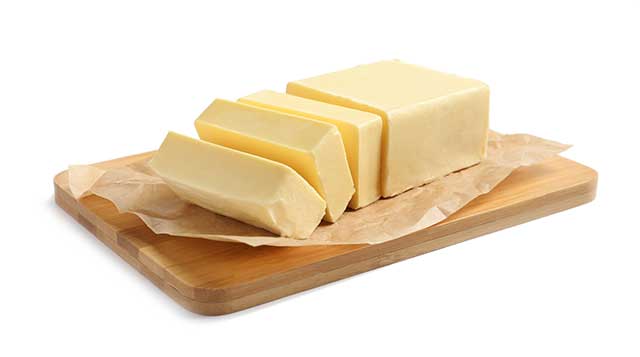
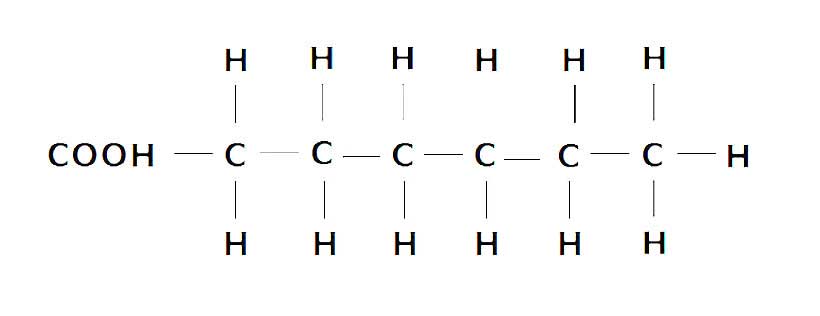
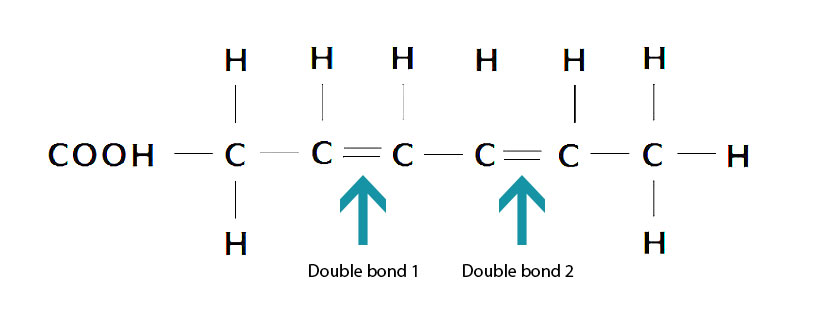
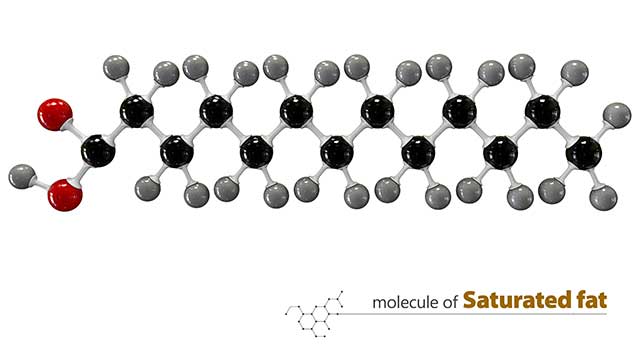
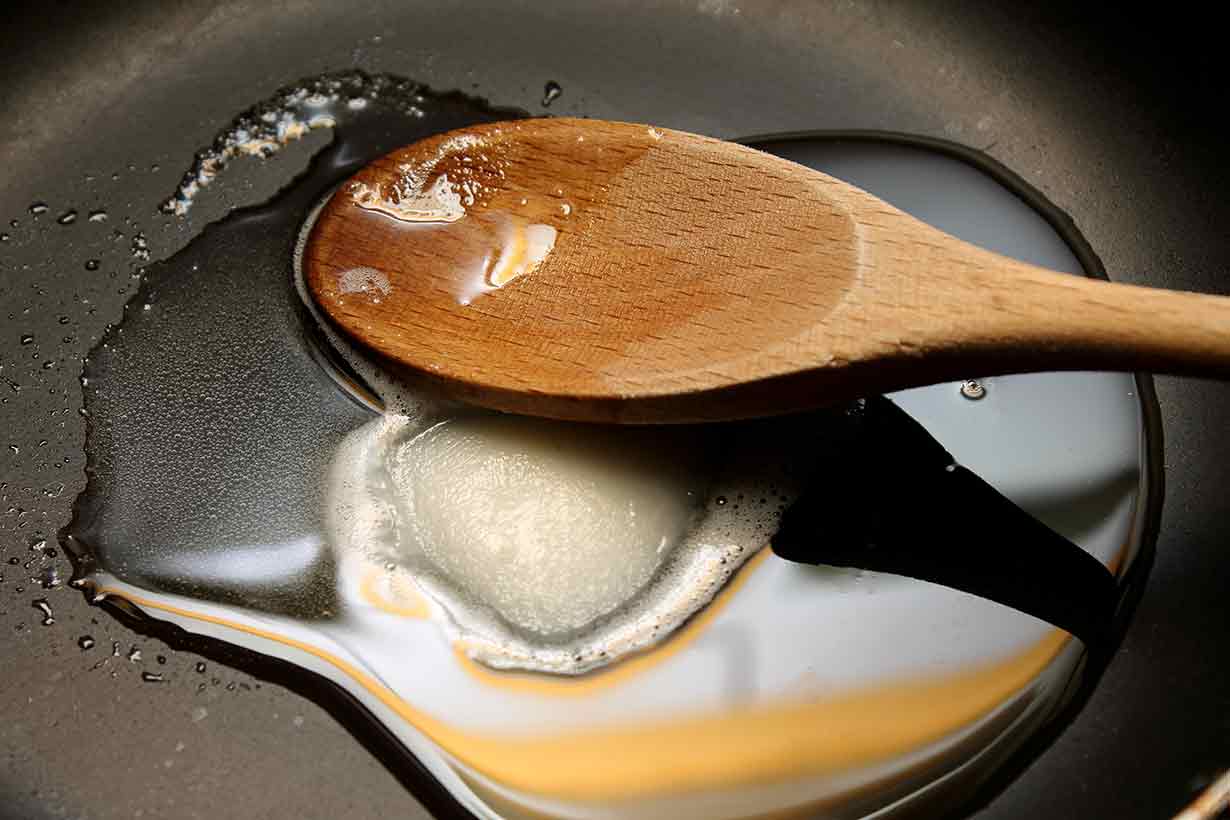
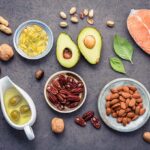

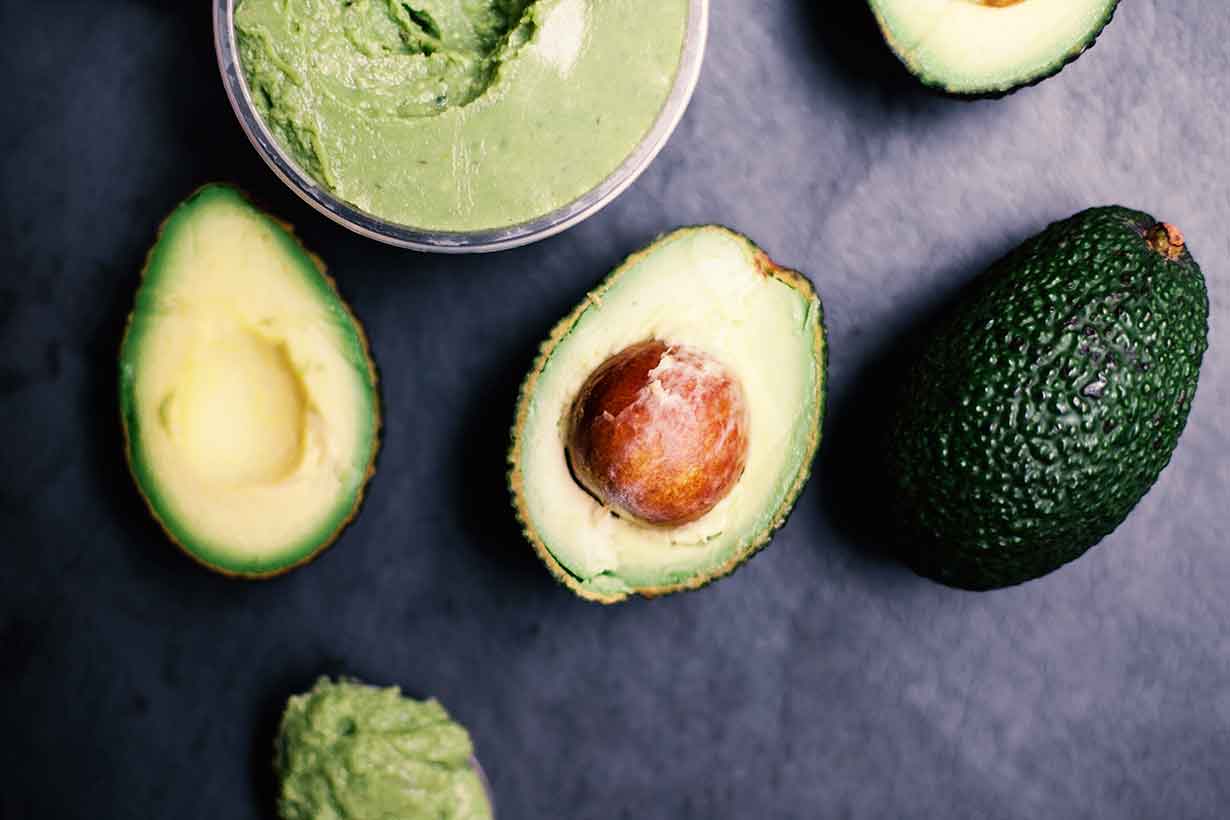

Great post. Truly informative and clears the air on a sometimes misinformed topic.
Thank you Scott. Nice to hear that from a cardiovascular expert.
So, what is best choice for frying fish? Very confused when the name of oil isn’t included so the consumer has help with which to purchase.
You can find a guide to all the different cooking oils here: https://www.nutritionadvance.com/types-of-cooking-fats-and-oils/